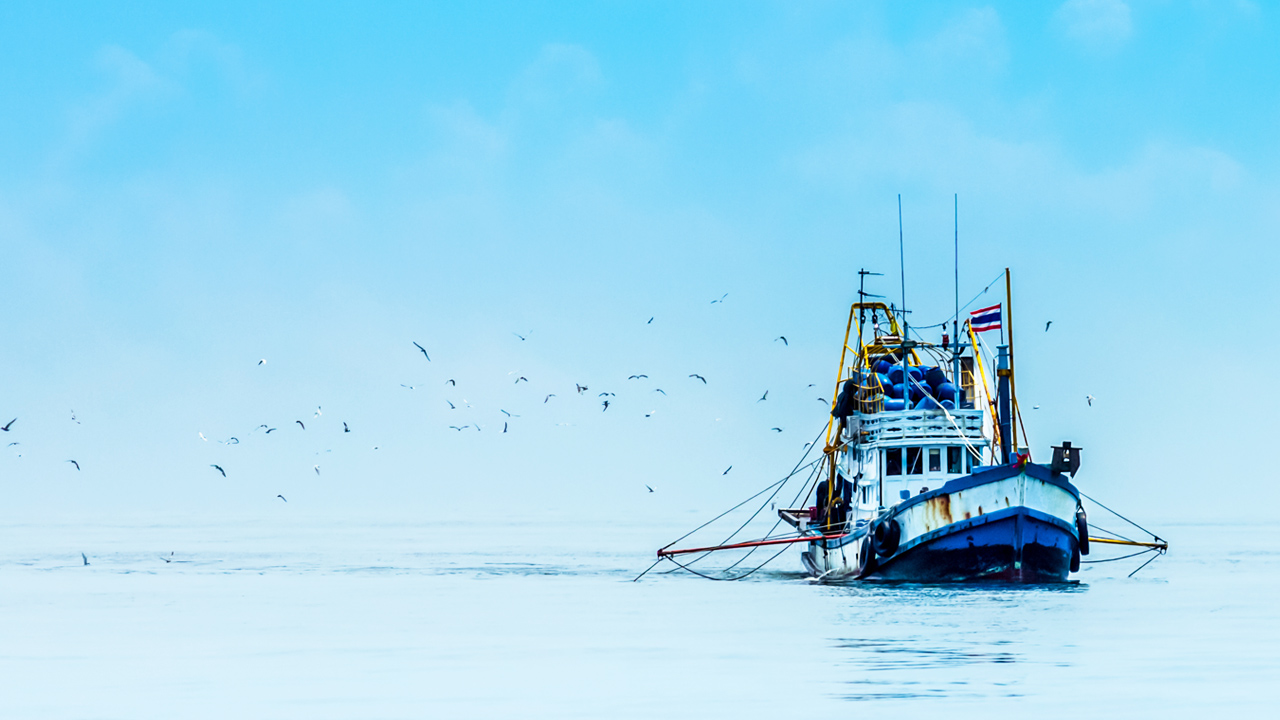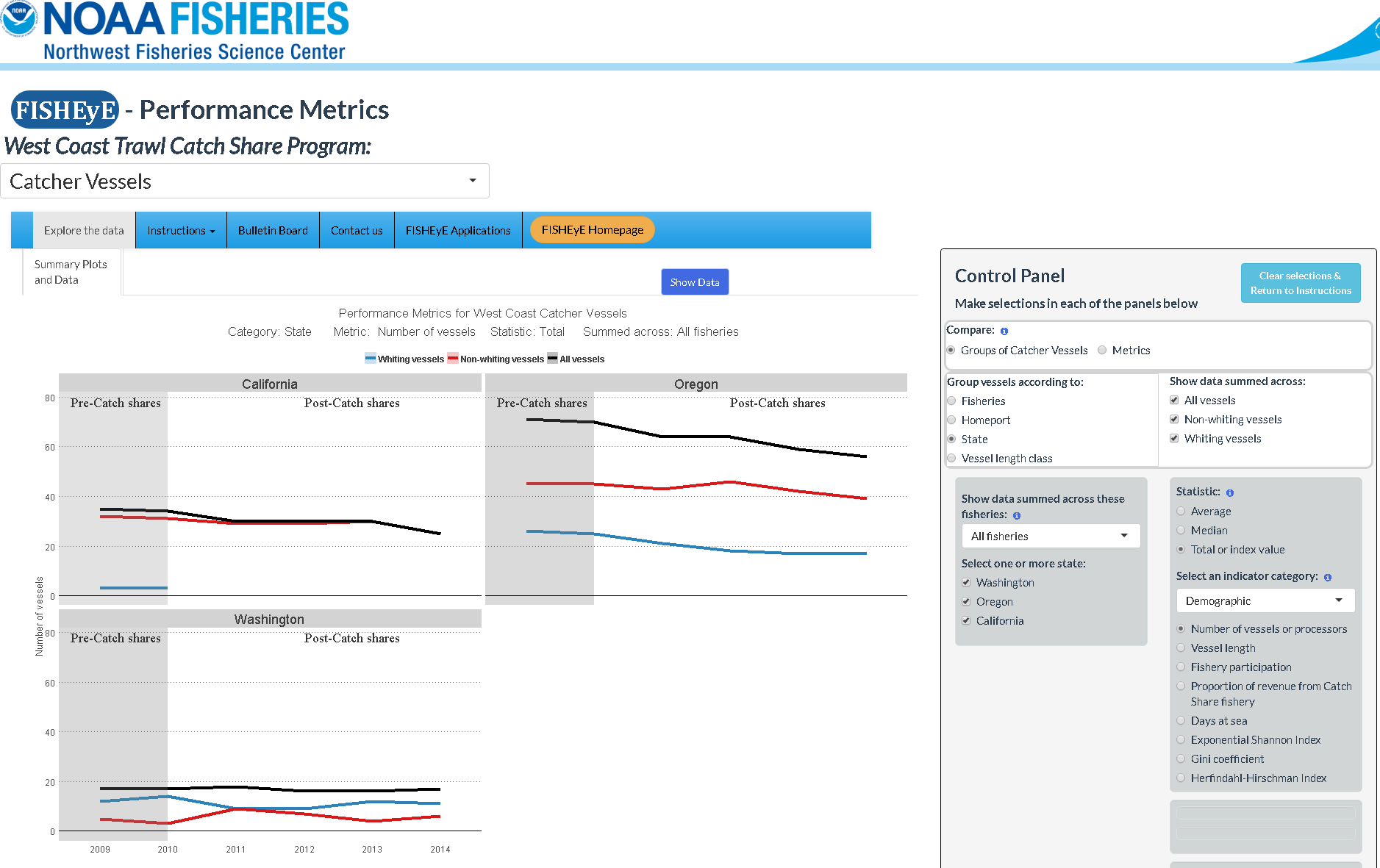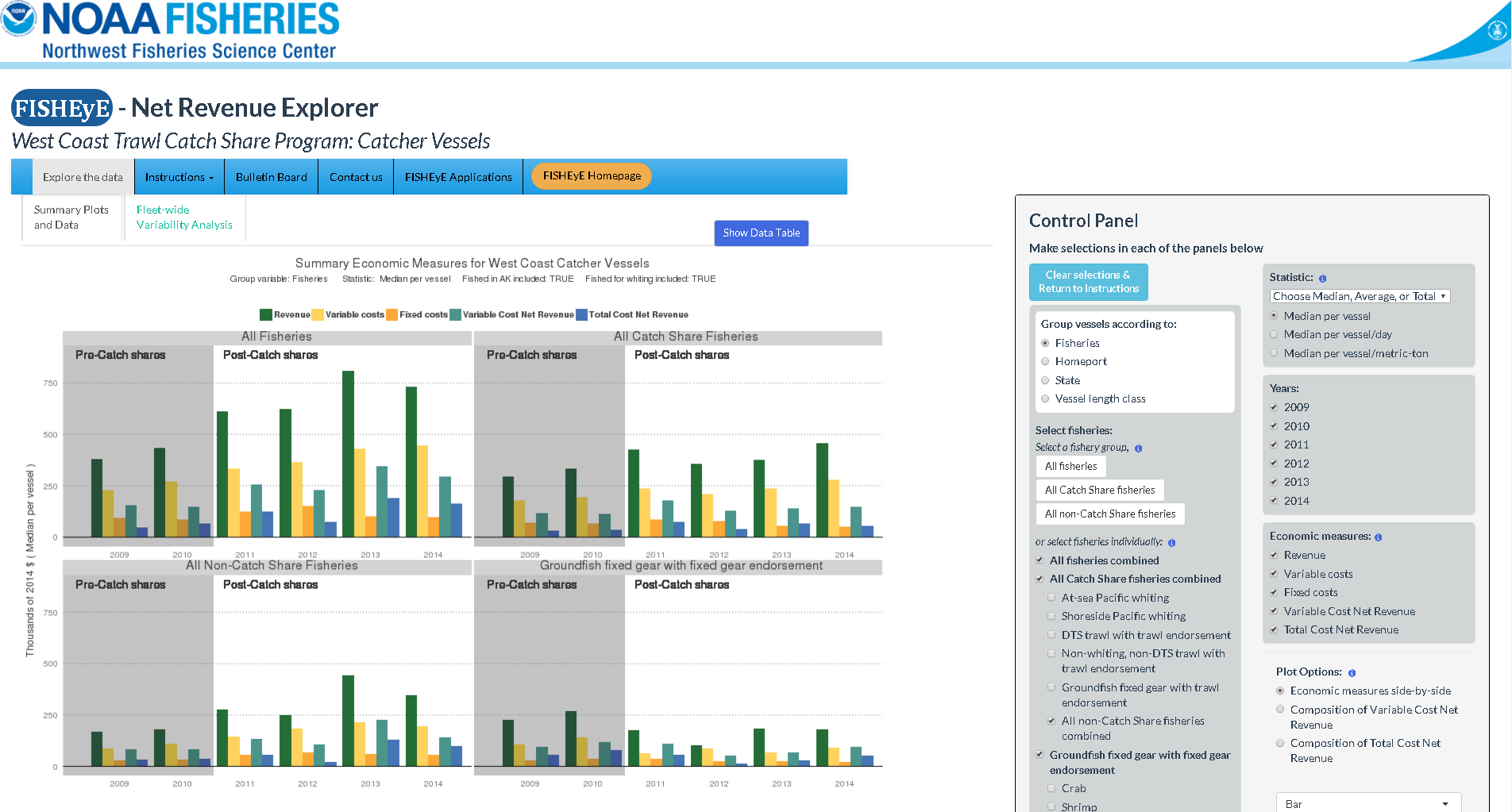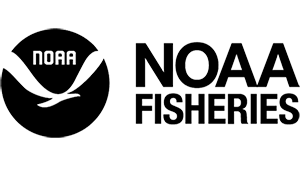NOAA Fisheries and the Pacific Fishery Management Council oversee the management of over 90 species of groundfish in U.S. Federal waters. These stocks are harvested in both commercial and recreational fisheries off the coasts of Washington, Oregon, and California. NOAA Fisheries collects many types of data to help guide the management of fisheries resources.
Managing resources with R & Shiny

"Posit Connect allows the people most familiar with the data, methodologies, and objectives to develop the web application.”
The Challenge

The Solution
There is considerable diversity of those interested in fishery management programs: individual fishermen, industries, environmental organizations, and academics. The solution needed to be user-driven, reliable, and easy to navigate. Flexibility was key. NOAA scientists wanted users to be able to view data at a resolution (by fishery, state, homeport) that would satisfy their needs while taking confidentiality issues into account. At the same time, it needed to be accessible to people without strong statistical, economic, or computer skills.
Why Posit?
The team at NOAA Fisheries has been using R and RStudio to process, analyze, and report on the catch share program for years. The Posit package, Shiny, allowed them to build a useful online tool that utilizes the methods and code previously developed. Posit Connect provided the ability to share the Shiny applications in a secure yet accessible way. In general, the research scientists analyzing and reporting fisheries management programs are not familiar with html and javascript, the languages needed to develop web pages. Using the RStudio IDE, Shiny, and Posit Connect allows the scientists who know the data, methodologies, and objectives to develop the web application, rather than relying on an external web developer. Requests for new analyses or ways to view the data can be quickly developed and deployed.
The Payoff
Developing the website has allowed fishermen, industry, environmentalists and academics access to the data through easy downloads, met presidential mandates for data access, and created a learning tool. Fishermen can now compare how they are doing against the average vessel in their fishery. Perhaps the greatest payoff has been the ability of NOAA scientists to simply say, “Yes, I can show you that result, just let me pull up FISHEyE”.

